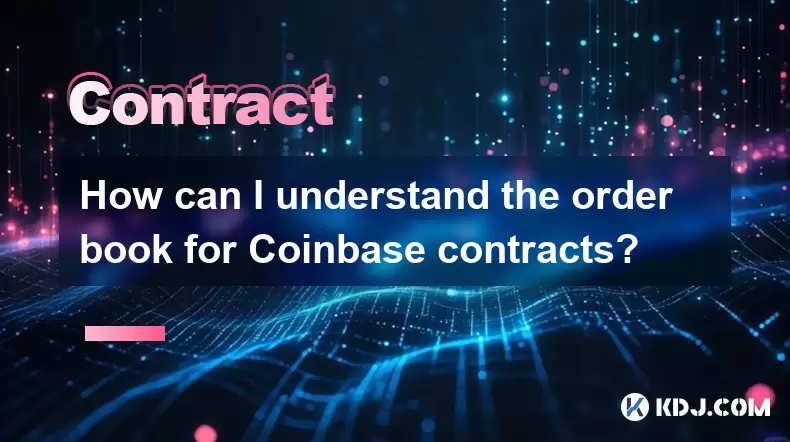-
 Bitcoin
Bitcoin $120100
0.91% -
 Ethereum
Ethereum $4597
8.09% -
 XRP
XRP $3.292
4.12% -
 Tether USDt
Tether USDt $0.9999
-0.01% -
 BNB
BNB $837.7
3.84% -
 Solana
Solana $190.8
8.16% -
 USDC
USDC $0.9998
-0.01% -
 Dogecoin
Dogecoin $0.2365
4.04% -
 TRON
TRON $0.3515
1.90% -
 Cardano
Cardano $0.8502
8.56% -
 Chainlink
Chainlink $23.56
10.38% -
 Hyperliquid
Hyperliquid $44.88
2.69% -
 Stellar
Stellar $0.4538
4.57% -
 Sui
Sui $3.910
5.74% -
 Bitcoin Cash
Bitcoin Cash $624.3
6.95% -
 Hedera
Hedera $0.2626
6.35% -
 Ethena USDe
Ethena USDe $1.001
-0.01% -
 Avalanche
Avalanche $24.81
6.92% -
 Litecoin
Litecoin $129.0
6.38% -
 Toncoin
Toncoin $3.519
3.77% -
 UNUS SED LEO
UNUS SED LEO $9.069
1.07% -
 Shiba Inu
Shiba Inu $0.00001367
4.45% -
 Uniswap
Uniswap $11.55
3.55% -
 Polkadot
Polkadot $4.186
7.13% -
 Ethena
Ethena $0.8169
2.57% -
 Cronos
Cronos $0.1670
0.16% -
 Dai
Dai $0.9999
-0.01% -
 Pepe
Pepe $0.00001223
6.79% -
 Bitget Token
Bitget Token $4.464
1.34% -
 Aave
Aave $317.0
6.94%
How can I understand the order book for Coinbase contracts?
The order book on Coinbase Derivatives displays real-time buy (bid) and sell (ask) orders for crypto futures, helping traders assess liquidity, spot support/resistance levels, and make informed trading decisions based on market depth and order flow.
Aug 12, 2025 at 06:01 pm

What Is an Order Book in Coinbase Contracts?
The order book is a real-time list of buy and sell orders for a specific cryptocurrency futures contract on Coinbase Derivatives, commonly referred to in the context of Coinbase Advanced Trade or similar platforms offering contract trading. It displays the current bid (buy) and ask (sell) prices, along with the volume of contracts traders are willing to trade at those prices. The order book is fundamental for understanding market depth and liquidity. Each entry in the order book represents an open limit order placed by a trader who wants to buy or sell at a specified price.
The bids appear on the left side of the order book, listed in descending order from the highest price to the lowest. The asks are on the right, arranged in ascending order from the lowest to the highest. The topmost bid is the highest price someone is willing to pay, while the top ask is the lowest price someone is willing to accept. The difference between these two prices is known as the bid-ask spread, a key indicator of market liquidity.
Understanding the order book enables traders to anticipate price movements based on supply and demand. A dense order book with large volumes near the current price suggests strong support or resistance levels. Traders use this data to decide whether to place limit orders, market orders, or stop orders strategically.
How to Access the Order Book on Coinbase
To view the order book for Coinbase contracts, navigate to the Coinbase Advanced Trade platform. Log into your account and select the "Derivatives" or "Futures" tab, depending on the interface version. Choose the specific contract you wish to analyze, such as BTC-USD Quarterly Future or ETH-USD Perpetual Contract.
Once the trading interface loads, locate the order book panel, typically positioned on the right-hand side of the screen. This panel is often labeled "Order Book" or "Market Depth". If not visible, check for a toggle or layout option to enable it. The order book updates in real time, reflecting changes in bids and asks as new orders are placed, modified, or canceled.
Some users may prefer a depth chart, which is a visual representation of the order book. This chart plots price on the Y-axis and cumulative volume on the X-axis, showing bid volume in green and ask volume in red. The depth chart helps visualize where large clusters of orders exist, potentially indicating strong price levels.
Interpreting Bid and Ask Levels
Each row in the order book represents a price level and the total volume of contracts available at that price. For example, a bid entry might show $60,100 with 10.5 contracts, meaning traders are collectively offering to buy 10.5 BTC contracts at $60,100 each. Similarly, an ask entry at $60,150 with 8.2 contracts indicates sellers are offering that volume at that price.
The market price is typically close to where the best bid and best ask meet. If a market buy order for 5 contracts is placed, it will be filled against the lowest available asks, starting at $60,150 in this example. Conversely, a market sell order will execute against the highest bids.
Large orders, known as iceberg orders, may not be fully visible in the order book. These are partially hidden to prevent market manipulation or price slippage. Sudden disappearances of large bids or asks can signal that a major player is pulling liquidity, which may precede a price move.
Traders watch for order book imbalances—when one side has significantly more volume than the other. A heavy concentration of bids may suggest bullish sentiment, while a wall of asks could indicate resistance.
Using the Order Book for Trade Execution
To place a trade using the order book, decide whether you want a limit or market order. For a limit buy, set your price at or below the lowest ask. For a limit sell, place your order at or above the highest bid. The order will only execute if the market reaches your specified price.
To manually place a limit order:
- Click on a price level in the order book to pre-fill the order form
- Adjust the contract quantity in the order panel
- Select "Limit" as the order type
- Confirm the leverage and margin mode (cross or isolated)
- Click "Buy/Long" or "Sell/Short" to submit
For a market order, the system automatically fills your trade at the best available prices in the order book. Be cautious during volatile periods, as market orders can result in slippage—execution at a worse price than expected—especially if the order book is thin at key levels.
Traders also use stop-limit or stop-market orders based on order book analysis. For instance, placing a stop-buy above a dense cluster of asks may indicate a breakout is confirmed.
Customizing and Reading Order Book Data
Coinbase allows users to customize how the order book displays data. Options include:
- Adjusting the number of price levels shown (e.g., 10, 20, 50)
- Choosing between price aggregation (grouping orders at the same price) or individual orders
- Enabling price ladder for rapid order entry
- Toggling between USD and contract count for volume
The price ladder is particularly useful for active traders. It enables one-click trading by assigning keyboard shortcuts to specific price levels, allowing rapid execution during fast-moving markets.
Some traders use time and sales data alongside the order book to see the history of executed trades. This helps confirm whether large orders are being filled gradually or in a single burst.
Understanding order book dynamics such as liquidity absorption—when large orders are slowly filled without moving the price drastically—can reveal institutional activity. Sudden spikes in order volume at a price level may indicate a stop-loss cluster or a pending news event.
Frequently Asked Questions
What does a "bid wall" or "ask wall" mean in the Coinbase order book?
A bid wall refers to a large cluster of buy orders at a specific price level, often indicating strong support. An ask wall is a large volume of sell orders, suggesting potential resistance. These walls can delay price movement until enough opposing orders overcome them.
Can I see who placed orders in the Coinbase order book?
No, the order book is anonymous. It only displays price, volume, and sometimes order type, but not trader identities. This ensures market fairness and prevents front-running based on user information.
Why does the order book sometimes freeze or lag?
Lag can occur during periods of high volatility or network congestion. Ensure your internet connection is stable and consider refreshing the page. Using the Coinbase mobile app may result in slower updates compared to the desktop web platform.
How do fees affect trading based on the order book?
Maker orders (limit orders that add liquidity) usually have lower fees than taker orders (market orders that remove liquidity). Placing limit orders within the order book to get filled as a maker can reduce trading costs over time.
Disclaimer:info@kdj.com
The information provided is not trading advice. kdj.com does not assume any responsibility for any investments made based on the information provided in this article. Cryptocurrencies are highly volatile and it is highly recommended that you invest with caution after thorough research!
If you believe that the content used on this website infringes your copyright, please contact us immediately (info@kdj.com) and we will delete it promptly.
- Unich's OTC Exchange: Surging with $1.2B Volume – What's the Hype?
- 2025-08-13 02:50:11
- MoonBull's Explosive Moves: Your Crypto Whitelist Ticket to Ride!
- 2025-08-13 02:30:11
- MAGACOIN Finance: Don't Miss the Presale Bonus!
- 2025-08-13 02:30:11
- Trump's Crypto Kingdom: $2.4 Billion and Counting
- 2025-08-13 02:50:11
- Solana, LSTs, and SEC Approval: A New Dawn for Crypto?
- 2025-08-13 02:55:12
- Bitcoin's Profit Surge: Unpacking the BTC Value Boom
- 2025-08-13 02:55:12
Related knowledge

Is it possible to adjust the leverage on an open position on KuCoin?
Aug 09,2025 at 08:21pm
Understanding Leverage in KuCoin Futures TradingLeverage in KuCoin Futures allows traders to amplify their exposure to price movements by borrowing fu...

What cryptocurrencies are supported as collateral on KuCoin Futures?
Aug 11,2025 at 04:21am
Overview of KuCoin Futures and Collateral MechanismKuCoin Futures is a derivatives trading platform that allows users to trade perpetual and delivery ...

What is the difference between realized and unrealized PNL on KuCoin?
Aug 09,2025 at 01:49am
Understanding Realized and Unrealized PNL on KuCoinWhen trading on KuCoin, especially in futures and perpetual contracts, understanding the distinctio...

How does KuCoin Futures compare against Binance Futures in terms of features?
Aug 09,2025 at 03:22am
Trading Interface and User ExperienceThe trading interface is a critical component when comparing KuCoin Futures and Binance Futures, as it directly i...

How do funding fees on KuCoin Futures affect my overall profit?
Aug 09,2025 at 08:22am
Understanding Funding Fees on KuCoin FuturesFunding fees on KuCoin Futures are periodic payments exchanged between long and short position holders to ...

What is the distinction between mark price and last price on KuCoin?
Aug 08,2025 at 01:58pm
Understanding the Basics of Price in Cryptocurrency TradingIn cryptocurrency exchanges like KuCoin, two key price indicators frequently appear on trad...

Is it possible to adjust the leverage on an open position on KuCoin?
Aug 09,2025 at 08:21pm
Understanding Leverage in KuCoin Futures TradingLeverage in KuCoin Futures allows traders to amplify their exposure to price movements by borrowing fu...

What cryptocurrencies are supported as collateral on KuCoin Futures?
Aug 11,2025 at 04:21am
Overview of KuCoin Futures and Collateral MechanismKuCoin Futures is a derivatives trading platform that allows users to trade perpetual and delivery ...

What is the difference between realized and unrealized PNL on KuCoin?
Aug 09,2025 at 01:49am
Understanding Realized and Unrealized PNL on KuCoinWhen trading on KuCoin, especially in futures and perpetual contracts, understanding the distinctio...

How does KuCoin Futures compare against Binance Futures in terms of features?
Aug 09,2025 at 03:22am
Trading Interface and User ExperienceThe trading interface is a critical component when comparing KuCoin Futures and Binance Futures, as it directly i...

How do funding fees on KuCoin Futures affect my overall profit?
Aug 09,2025 at 08:22am
Understanding Funding Fees on KuCoin FuturesFunding fees on KuCoin Futures are periodic payments exchanged between long and short position holders to ...

What is the distinction between mark price and last price on KuCoin?
Aug 08,2025 at 01:58pm
Understanding the Basics of Price in Cryptocurrency TradingIn cryptocurrency exchanges like KuCoin, two key price indicators frequently appear on trad...
See all articles

























































































